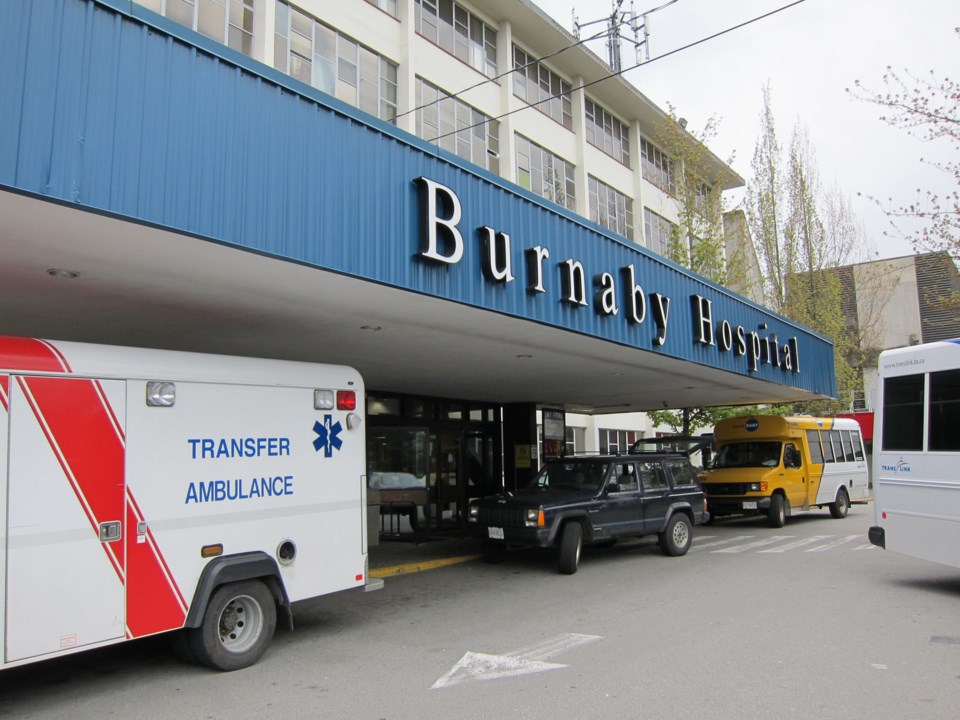Burnaby is not the place you want to blow out your knee.
Local residents looking to get their anterior cruciate ligament (ACL) fixed wait an average of nine months – or more than four times – longer than the provincial average, according B.C. Ministry of Health data.
They also wait more than four times longer to get their gall bladders removed and their hernias repaired.
Overall, Burnaby Hospital has the longest waits for adult elective surgery in the Lower Mainland, and they could get even longer after a Fraser Health decision to delay elective surgeries in the health region in January and February to avoid operating room budget overruns.
Surgeries during the last two months of the fiscal year, which ended in March, were set to outpace budgets, so cases at some hospitals were delayed and bumped into the next budget cycle.
“We have a budget given to us every year, and with that we have so many surgical cases, so we monitor that all the time,” Fraser Health executive director of surgery Judith Hockney told the NOW.
Will that mean an increase in wait times?
“If [surgeons] are seeing more people than we can do in the budgeted cycle, your waitlist will grow,” she said.
The median wait time (or number of weeks it takes to complete 50 per cent of cases) for all adult elective surgeries at Burnaby Hospital is currently 10.4 weeks, compared to 6.4 weeks for Fraser Health and six weeks provincially.
One factor driving up that number, according to Hockney, is cataract surgeries, which make up about a third of Burnaby’s wait-list.
As of March 31, 989 local patients were waiting for the eye surgery, and from Jan. 1 to March 31, the local hospital completed 497 of the procedures.
The median wait time for the surgery is 14.6 weeks in Burnaby, compared to 7.9 weeks provincially and 10.7 in the rest of Fraser Health.
Long wait times for cataracts and a number of other surgeries at Burnaby are driven by the needs of an aging population, according to Hockney.
“Fraser Health’s population continues to grow, as does our proportion of seniors,” she said. “This means higher demand for non-urgent, age-related surgeries like cataracts, hernia or knee replacements; or emergency surgeries like hip repair. As one of Fraser Health’s largest community hospitals, Burnaby tends to see more of these types of procedures, which contribute to almost half of the overall wait list.”
It’s up to individual hospitals and physicians in the region to find ways to make that demand fall within budgets.
One way Fraser Health has tried to get wait lists under control is to offer surgeons operating room time at other hospitals where it is available, but not all doctors take the health authority up on the offer.
“That’s their right,” Hockney said. “If they don’t want to take any extra OR time anywhere else, we can’t make them do that.”
Another way Fraser Health has tried to keep wait times down is its Soonest Surgery Tool, an online tool that predicts the five surgeons most likely able to perform a specific surgical procedure sooner than others across the health authority.
“We understand this is frustrating,” Hockney said of lengthy wait times. “That is why we try to work really hard with our physician partners to reduce those wait times by looking at different solutions and being innovative with them.”
More funding would solve the problem, she said, but until that happens health officials will have to be “flexible and nimble” to meet the needs of a growing, aging population.
“If money was unlimited and resources were unlimited – surgeons, staff – of course you’d have shorter waitlists, but we are working within our budget that we have,” she said.



